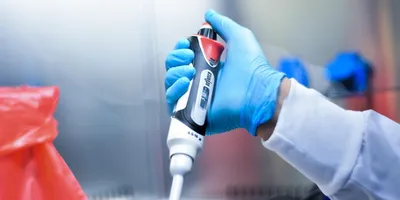Positive displacement pipettes are an essential tool for many laboratory applications that require precision liquid handling, particularly for challenging substances such as viscous, volatile, or high-density liquids. Unlike traditional air displacement pipettes, positive displacement pipettes are designed to eliminate the air gap between the piston and the liquid, thereby reducing inaccuracies. Understanding how these pipettes work can help scientists and lab technicians select the most suitable pipetting tool for their applications.
How Positive Displacement Pipettes Operate
Positive displacement pipettes work by using a disposable piston that comes into direct contact with the liquid being pipetted. The pipette mechanism consists of a piston-and-capillary system where the piston moves within the capillary, pushing the liquid out and pulling it in without any air between the piston and the liquid. This air-free system ensures that the volume of liquid aspirated is exactly what is dispensed, with minimal deviations.
When the plunger of a positive displacement pipette is pressed, the piston moves down the capillary, displacing the liquid directly. During aspiration, the piston retracts, creating a vacuum that draws the liquid into the capillary. Because there is no air cushion, the liquid movement is not affected by factors such as viscosity, vapor pressure, or temperature—variables that often cause inaccuracies in air displacement pipettes.
Advantages of Positive Displacement Pipettes
Positive displacement pipettes offer several key advantages, particularly in situations where traditional pipettes struggle to deliver accurate results:
Handling Viscous Liquids: Positive displacement pipettes excel at handling viscous liquids such as glycerol, oils, or detergents. Since there is no air cushion, the viscosity of the liquid does not influence the accuracy of the aspiration and dispensing process.
Volatile and High Vapor Pressure Liquids: Liquids with high vapor pressure, such as organic solvents (e.g., acetone, ethanol), can easily evaporate or form bubbles when using air displacement pipettes. Positive displacement pipettes prevent this by keeping the liquid in direct contact with the piston, minimizing evaporation.
High-Density and Low Surface Tension Liquids: High-density liquids can cause variations in pipetting accuracy with air displacement systems due to the impact on the air cushion. Positive displacement pipettes eliminate this issue by directly displacing the liquid.
Reduction of Cross-Contamination: Since positive displacement pipettes use a disposable piston, the risk of cross-contamination is greatly reduced. This makes them ideal for applications involving sensitive samples, such as DNA or RNA analysis, or working with hazardous substances.
Applications of Positive Displacement Pipettes
Positive displacement pipettes are used across a range of laboratory settings, including biotechnology, chemistry, and pharmaceutical labs. Specific applications include:
- Pipetting high-viscosity samples, such as those found in biochemical assays involving lipids or proteins.
- Handling volatile or hazardous chemicals, where minimizing exposure and evaporation is crucial.
- PCR and molecular biology workflows, where accuracy and minimizing cross-contamination are of utmost importance.
Differences Between Positive and Air Displacement Pipettes
The main difference between positive displacement pipettes and traditional air displacement pipettes lies in the presence of an air cushion. In air displacement pipettes, an air gap exists between the piston and the liquid, which can lead to variations in accuracy due to environmental factors like temperature and humidity. In contrast, positive displacement pipettes eliminate this air gap, ensuring consistent results even in challenging conditions.
While air displacement pipettes are suitable for general laboratory tasks involving aqueous solutions, positive displacement pipettes are better suited for specialized applications that require high accuracy with difficult-to-handle liquids.
Conclusion
Positive displacement pipettes are a reliable choice for laboratories dealing with viscous, volatile, or high-density liquids. By eliminating the air gap between the piston and the liquid, these pipettes provide precise and accurate measurements, making them indispensable for a variety of specialized applications. Understanding how positive displacement pipettes work and their advantages helps lab professionals select the right pipetting tool for their specific needs, ensuring reliable and reproducible results in their experiments.
This content includes text that has been generated with the assistance of AI. Lab Manager’s AI policy can be found here.











